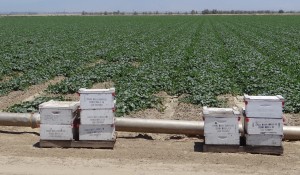Appreciate U.S. Agricultural Policy and the Farmers Who Grow Our Food
The closest simple definition of basic U.S. Agriculture Policy can be reflected in United Nations definition (see below). I could not find a simple statement from the U.S Government, after searching for a half an hour on the internet. I remember hearing it explained during my classes at the University of Georgia when I was studying for my agriculture degree.
“Food security (Source Wikipedia)
The United Nations Food and Agriculture Organization (FAO) defines food security as existing when “all people, at all times, have physical and economic access to sufficient safe and nutritious food that meets their dietary needs and food preferences for an active and healthy life”. The four qualifications that must be met for a food secure system include physical availability, economic and physical access, appropriate utilization, and stability of the prior three elements over time.”
In other words, we need food to be:
1) Readily available for the foreseeable future
2) Available at relatively low prices
3) The food needs to safe for consumption
4) The food needs to be nutritious
Formulating agricultural policy for the United States is a complicated process and has evolved over the history of our country. Changes to agriculture policy continue as innovations in technology change the way our food is grown, how it is consumed within the U.S. and how it is exported all over the globe. Agriculture exports contribute positively to our balance of trade. Often we hear of a negative U.S. trade balance because of our imports of electronics, machines, vehicles and oil. Agricultural products are an very important part of our nation’s economy. Changes in agricultural policy due to legislation, the farm bill (including subsidies), the USDA (United States Department of Agriculture) , EPA (Environmental Protection Agency), and other influences, contribute to the evolution of farming. More than three million people farm or ranch in the United States. Over 22 million people are employed in farm or farm-related jobs, including production agriculture, farm inputs (fertilizer, seeds), processing (wheat into pasta), marketing and sales (wholesale and retail).
On June 19th, 2016 you may have noticed the headlines about the failed economy and food policy of Venezuela. Even though Venezuela has some of the largest oil reserves, the people were rioting because they did not have enough food. Transportation of food was under armed guard, soldiers stood guard over bakeries, mobs stormed grocery stores, pharmacies and butcher shops. As I read the news, it made me think how thankful I am that we have the wonderful farmers, ranchers, dairy men and women, and all the other agricultural producers that we have in the U.S. We also have a government that, for the most part, is dedicated to the success of our agricultural businessmen and women.
The political stability of a county is really based on the overall health of a well fed population. Without a well fed population, it could be political and economic chaos. In the U.S., most of us take for granted that food will always be available and have not thought about a limited supply of food. This is different than not having enough money to buy available food. Can you imagine a time when there would be no milk, bread or eggs (the staples for every run on the grocery store during an emergency)? In this country it is unimaginable.
Farmers in the U.S. need to have the availability of government backed programs in order to remain in business. Let me give you an example. Once I was given the opportunity to buy my own farm. When I did a ten year forecast, it became obvious that within ten years of up and down profitability, I would need to plan for at least one year of total crop failure, not only zero income, but the loss of all my input expenses for that year. When I factored in the income needed to repay the debt for the “lost year”, my financial future did not look so good. I passed on the opportunity. Farmers are at the mercy of the weather which is totally out of there control, with few exceptions. An exception would be if the farmer has irrigation. Farmers need economic breaks to “weather” the bad times, so they can consistently continue to produce food for our county. We need farmers to continue to be in business.
Many times we hear, in a negative way, that mainstream farms are made up of “Factory” farms, when the truth is that over 95 percent of U.S. farms are owned by individuals, individual families, family partnerships or family corporations. Farms have had to get bigger because prices for most agricultural commodities have not risen along with the prices on nonagricultural goods. The only way for farms to remain profitable is to become bigger and make less money on a per unit basis, but grow and sell more volume. The individuals, individual families, family partnerships and family corporations are predominantly the same people who once owned smaller farms. The less innovative, less ambitions, less hard working, poorer managers have left the business, as within any industry. Without these surviving experienced, innovative agricultural businessmen, your food supply would not be what it is today.
Yes, there are those that will belittle the large “Factory” farms, and claim that we should all go “organic” or “buy local”, but the food security of our nation is dependent on main stream agriculture. Recently farm programs are now also including smaller farms, to encourage farming at almost any level, so local growers and organic growers can also benefit from some agricultural programs. It is important to support all agriculture to meet the needs of our county. When the organic, or local guy is out of product, you can still go to the grocery store and be confident there will be something to eat every day of the year!
